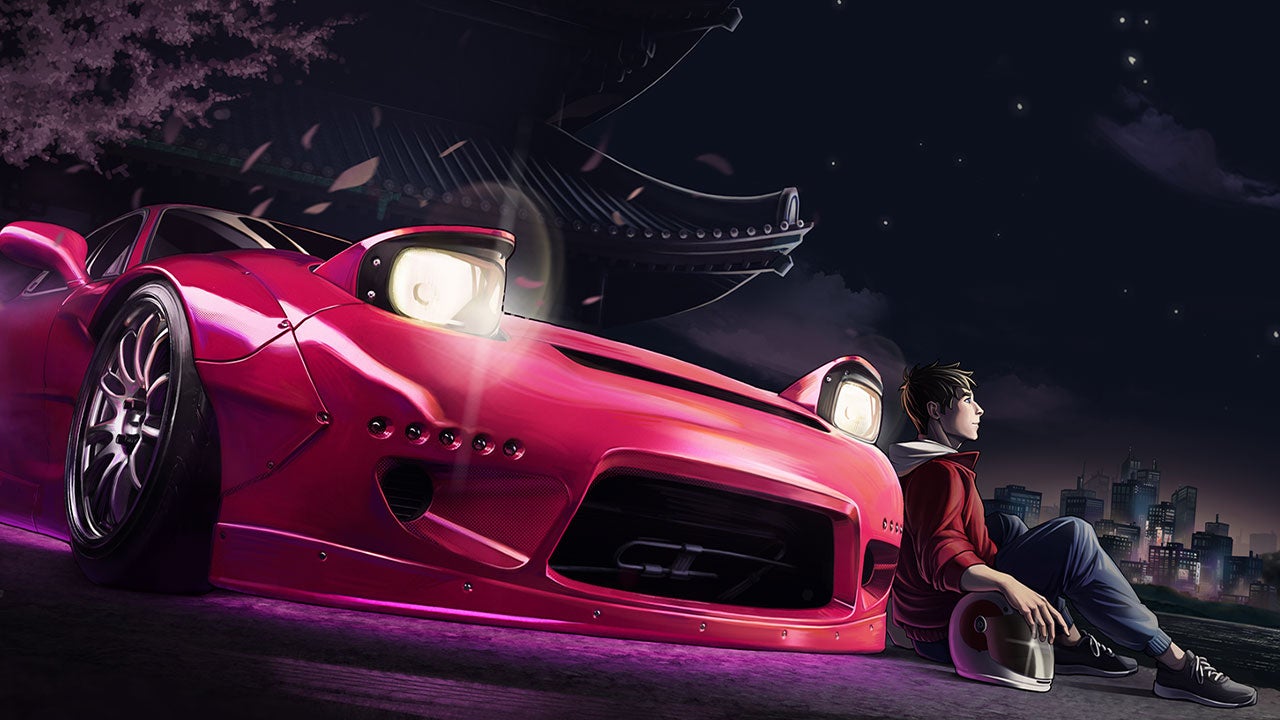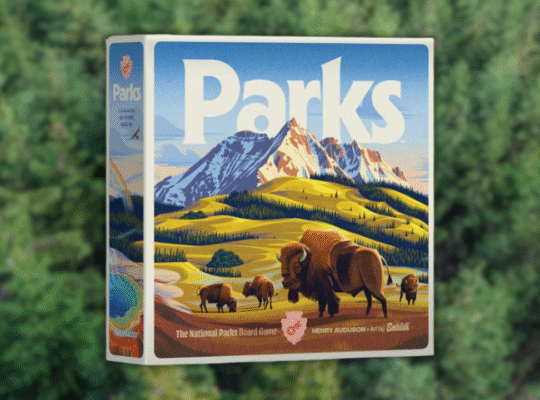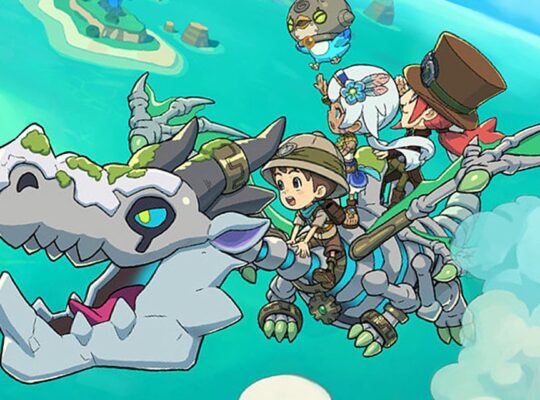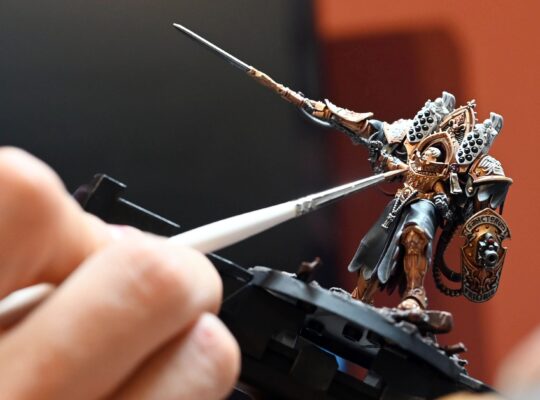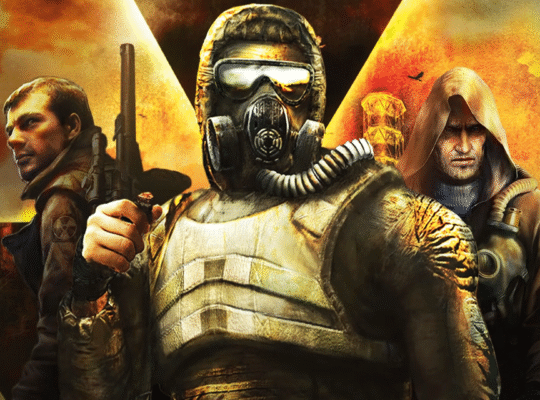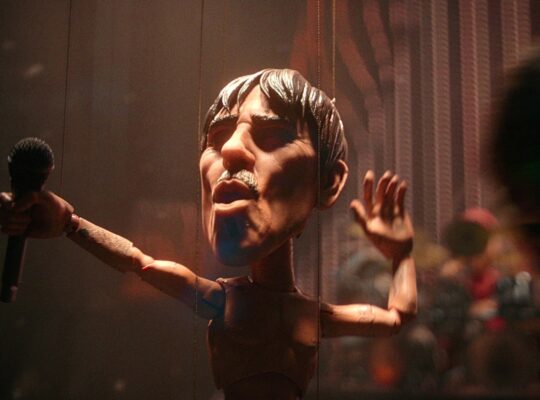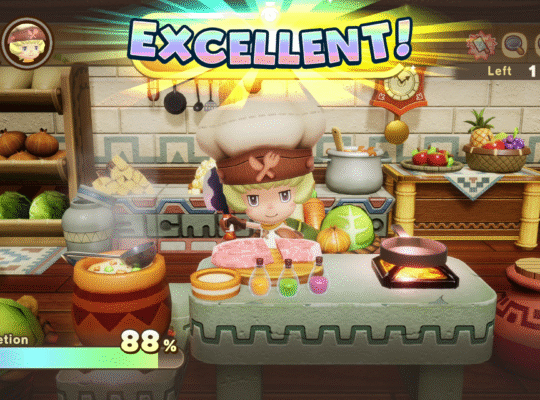
Japan may be the birthplace and spiritual hub of drifting culture, but Poland is home to the incredible Bartosz Ostalowski. After losing both arms in an accident, he became a pro drifter and is the only professional sports driver in the world who steers with his foot. So yes, on paper, sure, it’s perhaps a little incongruous that JDM: Japanese Drift Master has been conceived and crafted in Central Europe. But it’s not unprecedented, and a simple matter of geography was clearly not going to stop Warsaw-based developer Gaming Factory putting together this reverential ode to the Japanese art of turning corners sideways, belching white smoke and looking cool while doing it. JDM is a good drift racer, with a weighty and approachable handling model that’s been well-honed for overzealous oversteer. It boasts an excellent map, too – it’s filled with eye-catching and authentic detail. However, it’s also currently undermined by a very poor grip racing mode, wonky AI, and uneven difficulty, and it seems a bit like a project car that’s been pushed out on track before it was quite finished.
JDM is a story-based, open-world racer, set in a fictional slice of Japan and featuring 250 kilometres of roads to drive – from dense city grids and raised freeways to skinny, snaking mountain passes and blossom-lined byways. It’s hard to get an exact comparison of the map size compared to something like Test Drive Unlimited Solar Crown, The Crew Motorfest, or Forza Horizon 5, but JDM is definitely smaller than any of those overall.
That said, it doesn’t suffer from being more compact than its open-world racing peers. If anything, its map may just be its greatest victory.
Cherry Good
At its prettiest, JDM’s map is a real showstopper. Trees burst with pink, and the quaint little towns on the central lake are brimming with character and charm. Its primary strength, however, is its insistence on far more realistic road widths than we mostly find in other open-world games.
Developers generally opt for wider streets to give us more forgiving ribbons of tarmac to race on, as it makes overtaking and navigating through civilian traffic easier. JDM leans away from this philosophy and toward roads that are narrower and more challenging to navigate, and they regularly remind me much more of rally stages than a traditional open-world racer. Several sequences of linked hairpin corners are a particular highlight; they’re an absolute must for a game like JDM, and Gaming Factory has delivered.
Having the road network more cramped means you need to brake and weave through and around country traffic rather than simply blaze up the centre, like you can in games with luxuriously wide lanes built to keep NPC vehicles far apart. This does technically bring the overall pace of JDM down, but the good news is that there’s actually still a really effective sense of speed. Thanks to the narrow roads, everything whips by extremely quickly based on sheer proximity. JDM is an arcade racer at heart – and definitely not a hardcore drift simulator – but I enjoy the challenge of patiently but assertively cutting up traffic and threading my car through tricky and tight gaps. It’s demanding in a different way and, at a minimum, it helps set JDM apart.
That said, there are times where the traffic feels a little thicker than desirable out in the countryside – particularly considering the main city feels surprisingly dead by comparison, with large, empty streets and very few cars moving about. At night there’s also something amiss with the lighting; NPC headlights are far, far too dull, and it means oncoming cars only appear in view when you’re nearly upon them. And regardless of time of day, AI cars on the highway have an odd quirk that sees all traffic in front of you pulling to the left automatically as you approach from behind, like you’re an ambulance with sirens blazing. I know my GT-R is pretty sick, but that doesn’t mean I’m taking it to the hospital.
There are some other noticeable problems, too. Performance has largely been okay on my system (RTX 4080, Intel Core Ultra 9 185H), but I have had some detectable stuttering on occasion. To the naked eye it seems more dependable with frame generation off and the FPS set to 60.
Even setting that aside, though, after several days of driving these streets I still don’t feel like I’ve quite got a handle on which roadside objects are destructible and which aren’t. There are times I can clatter through large posts, and other times where tiny obstacles bring me to a total halt. You’re better off just trying not to collide with anything, because JDM generally doesn’t handle crashes that well, anyway. Bumping and jostling has a tendency to toss and tilt cars in odd ways.
For clarity, it’s true that some of these problems may soon be addressed, based on a list of known issues supplied by Gaming Factory, but they’re active frustrations for now.
Drift Horse
A bigger problem, however, is JDM’s uneven difficulty – which tends to bubble up any time the story steers away from actual drifting that it does so well. To be clear, the majority of its missions are drift-themed, and that’s definitely for the best, because it’s what the handling feels built for. There are two settings for the handling model: arcade and simcade. Simcade has a bit more of a nuanced feel – and it probably lacks a little of the arcade mode’s soft assistance that I could feel keeping the cars stable and obedient during a drift – but overall the difference between the two doesn’t feel particularly profound.
There’s a mix of drift missions, from participating in sanctioned events on one of the region’s dedicated race tracks to delivering dinners that come with a larger tip depending on how sideways the sushi got en route. Score requirements for drift missions are forgiving and I rarely found myself needing to repeat them. They’re mostly a pretty light challenge, but I’m okay with that.
Frustratingly, any time drifting is not the primary objective, things falter significantly. JDM’s take on grip racing is deeply unsatisfying and proved to be a real bottleneck for a while, with AI opponents that drive directly into (and sometimes under) you and other racers like you’re not even there. Forget about taking a rear-wheel drive car to any of these races; in my case the AI just galloped away like Scalextric cars as I struggled to get any drive out of the corners. Just buy the cheap, front-wheel drive Honda Civic and plonk in whatever upgrades you can. You won’t know if it’s fast enough until you try, because there’s no real indication of the performance level of your opponents’ cars in these races.
It doesn’t help that JDM is not really a great communicator. There were other occasions where an upcoming task was marked as a drift event, but it was actually a race that required me to catch (or escape) an opponent. That’s a mean bait and switch, because drift builds are just absolutely impractical for these events. Smoking it up may look flashy, but it’s by no means the quickest way from A to B. These events require road-holding; something that shoots out of corners like a stabbed rat. Hinting you should turn up with a drift build is a total waste of time. It’s like asking you to catch Russell Westbrook on a freshly-waxed basketball court, in socks. So instead, I bought an all-wheel drive NSX and never looked back. It outpaces the AI with ease.
But you won’t know you brought a hopeless car to one of these events until you drive there and get fundamentally outclassed. At that point the only thing to do is quit, respawn at your nearest garage, choose a new ride, and drive all the way back (because quick travel in JDM is limited to jumping between garages). I mostly wasn’t bothered by needing to drive to new events because if driving wasn’t fun I wouldn’t be here in the first place, but it did grate in these instances.
As a story-driven racer, JDM stitches all its events together with regular, manga-inspired graphic novel pages (which even read from right to left, as is the case with Japanese manga). It’s not my scene – I have no meaningful history with manga and I very quickly lost track of who all the characters were – but I admire it as a cute and on-brand way of injecting some extra personality into JDM, even if it is extraordinarily cheesy and hilariously horny. The last time I was this surprised by a sex scene in the story of a racing driver I was watching Days of Thunder and Tom Cruise was trying to slingshot a packet of Sweet’n Low into Nicole Kidman’s crotch.
No, I’m here for the cars and, while just over 20 is an admittedly slim selection compared to bigger-budget peers, the garage does hit some key notes. For an indie racer it’s honestly impressive that these are largely licensed; Honda, Nissan, Mazda, and Subaru all make official appearances, and that adds a lot of really crucial credibility to the overall love letter to drift culture that JDM is trying to write here. Performance and interior/exterior customisation is a big feature, and there are a ton of parts to earn and install. It’s impressively Need for Speed-adjacent from such a comparatively small developer. At any rate, I tend to keep my cars more understated – but if you want a katana gearstick, you go right ahead.
After the roughly 10-hour story ends, collecting the remaining cars, dabbling with modifications, and cruising around solo is largely what’s left. There are some sushi delivery side missions and “underground” drift events where you can bet on how many points you’ll think you’ll score, but that’s it. It’s just not compelling me to stick around. Gaming Factory is promising more modes over the next nine months, like an expanded driving school, more missions, a photo mode, and split-screen (which would be a big deal because there’s no online multiplayer). However, the side effect of all these plans is that it leaves JDM feeling like it wasn’t really finished in the first place, and a lot like an early access game that hasn’t actually been identified as such.


